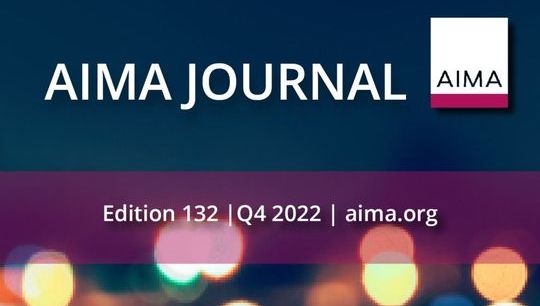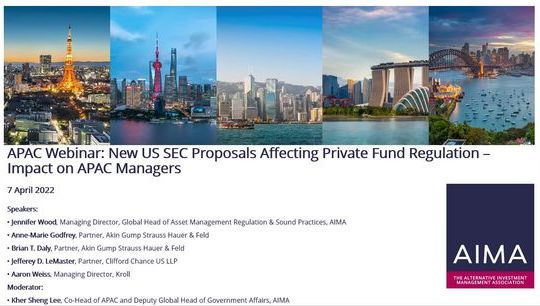Hedge fund managers should reevaluate their approach to side letter management amidst increased scrutiny
By Vivek Pingili Director ; Andrew Poole, Director, ACA Group
Published: 28 June 2021
Introduction
The global hedge fund industry has seen a significant increase in both the volume and complexity of side letters over the past decade. Before the global financial crisis of the late 2000s, many hedge fund managers ran over-subscribed funds. At the same time, investors typically had a limited ability to negotiate investment terms (including via side letters).
However, even established hedge fund managers are finding that they are now the ones with limited control, over both the length and complexity of side letters as well as the frequency with which they need to negotiate them with investors.
Despite the evolving environment around side letters, many hedge fund managers have not updated their operational processes in response. As a result, some managers are finding an increasing number of instances of side letter non-compliance (albeit of an inadvertent nature), a situation that has been exacerbated by increased scrutiny from both investors and regulators. For example, some investors’ operational due diligence processes are increasingly requiring evidence of side letter compliance, including periodic certifications, as well as prompt notification of any compliance failures.
Regulators are turning their attention to side letters as well. For example, the US Securities and Exchange Commission has increasingly focused on side letter compliance during their examinations of hedge fund managers, resulting in multiple regulatory sanctions of both a private and public nature. In instances where deficiencies have been found, managers have often been required to present an action plan to the regulator designed to enhance their operational compliance processes to reduce the risk of repeat failures.
Practice-oriented solutions and strategies
In the current regulatory and business environment, the need to update approaches to side letter compliance has never been higher. This article discusses some practical solutions and strategies, including the use of emerging technology, to help hedge fund managers effectively monitor and manage their side letter compliance obligations.
Creating side letters - thoughtful negotiations & planning
The first step in making the side letter management process more manageable is to reduce (or eliminate) variations in side letter terms on identical or similar topics as much as possible. A good starting point is to standardise side letter language (for example, via a side letter template and/or electronic database that is periodically updated). Based upon previously negotiated topics of the type a manager typically expects its investors to request in the future, this will ensure increased consistency in terms from side letter to side letter as well as from fund to fund. This in turn reduces the operational burden on a manager of keeping track of subtle and/or significant variations in terms (an area where non-compliance is frequent).
While some investors may push for highly customised side letter terms (including their own versions of such terms), most investors are comfortable with the hedge fund manager’s standard language on a particular provision when it is not uniquely relevant to such investors.
When receiving a side letter request (particularly of a type not agreed to in the past), it is critical to get buy-in from appropriate persons at the firm to ensure that satisfying the request is feasible (both conceptually as well as on the terms being requested). Some parties at a firm may negotiate side letter terms only to discover later that there are major obstacles to complying with the negotiated provisions. To address this challenge, fund managers are increasingly establishing side letter committees to ensure that their firms are making the correct collective decisions on when to give into investors’ side letter requests and when to push back entirely or compromise.
Finally, there is significant room for streamlining the burdens around administering most-favoured nations (MFN) clauses at many hedge fund managers. Historically, these clauses were provided only to a small sub-set of investors receiving side letters – typically the largest and/or most strategic investors. However, in the face of decreasing negotiation leverage over the past few years, some managers have agreed to provide MFN provisions to almost any investor who asks for one, which has significantly increased the administrative burdens and non-compliance risks associated with managing MFN elections made by investors.
Managers should actively seek to limit the impact of MFN elections (both upfront and thereafter) on their operational teams by seeking effective ways to limit the scope of provisions an investor receiving an MFN provision may be entitled to. For example, size-based MFNs and limiting the universe of provisions that an investor can elect via an MFN can significantly help streamline MFN election processes. To eliminate the risk of investors with MFNs electing (and receiving) provisions outside the scope of their MFNs, managers should consider proactively providing investors with only the database of provisions they may elect from.
This could, of course, sit awkwardly with the requirements of the European Alternative Investment Fund Managers Directive (AIFMD) if engaging with European Economic Area (EEA) domiciled investors. AIFMD requires the manager to disclose not only its ability to offer alternative arrangements to investors, but also a description of those arrangements and the types of investors eligible to receive them.
Effective processes for monitoring, meeting, and testing side letter obligations
Once side letters have been negotiated, the next step is to determine how to best create effective processes to monitor, meet, and forensically test for compliance with both recurring and non-recurring side letter obligations.
Historically, fund managers have tried to get their arms around side letter provisions by having their external or internal legal counsel prepare charts or matrices summarising the provisions that impose operational obligations. These tools typically track noteworthy variations in similar side letter provisions from one investor to another. While the manual nature of utilising such tools may have worked in the past, managers are finding that these older approaches are less effective in ensuring compliance with side letter obligations as they have become increasingly voluminous. We have seen an increasing number of managers who rely on outdated tools fail to comply with side letter provisions and/or fail to demonstrate such compliance in a readily accessible manner. As such, managers should consider using more effective and modern tools such as technology-based solutions to better manage side letter obligations.
Given the varying nature of side letter terms, it is rarely the case that one person within a firm can effectively monitor and manage side letter obligations. As such, it is imperative that managers assign responsibilities in this area to appropriate individuals in the firm. For example, financial and tax reporting-related obligations should be assigned to one or more members of a manager’s finance team (perhaps in coordination with the manager’s investor relations team). Similarly, obligations relating to investment-related matters, such as providing formal investment updates or offering co-investment rights, should be delegated to one or more investment team members. There is also a critical need to monitor in real time the tasks assigned to various responsible parties to ensure these are being completed in a timely manner.
Further, while recurring obligations, such as delivering periodic reports of a certain type, may be easier to monitor and manage, fund managers need to think harder about how to effectively handle non-recurring side letter obligations that are triggered in specific instances (e.g., preferential liquidity rights or co-investment rights relating to illiquid investments, including side-pocketed investments).
Finally, few managers currently undertake formal forensic testing of side letter obligations in any organised manner (if at all) and even fewer maintain written documentation related to testing efforts. With increased pressure from regulators and investors to enhance such testing processes, it is critical that firms re-think their approach and consider newer solutions, such as technology-based tools.
Effectively leveraging newly-eemerging technology solutions
The business case for adopting technology to address the challenges with side letter compliance and mitigate risk through automation and workflows has never been stronger. While software in the past may not have been tailored to the needs of hedge fund managers for side letter management, the latest side letter management technology solutions offer compellingly efficient tools to bridge the gap across the hedge fund industry in virtually all of the areas covered in this article.
An effective side letter management software tool should include, at a minimum, provide the functionality to: (i) track side letter obligations and assign responsible parties to monitor, manage, and document within the tool compliance with such provisions (thereby making forensic testing of such compliance far more efficient than would otherwise be the case); (ii) link periodically recurring provisions (e.g., quarterly reporting obligations owed to a specific investor) as well as provisions without a specific frequency (e.g., co-investment or liquidity rights) to calendared activities to create, monitor and back-test compliance with workflows; (iii) to automatically scan in fully signed documents and parse their provisions into thematic categories (e.g., MFNs, reporting rights, etc.) as well as pull out key information like counterparties, commitment size, and more (in an effort to better streamline MFN election processes; and (iv) search for all variations of a particular type of provision granted to multiple parties across all side letters in the database (which can be leveraged to reduce compliance risks and burdens associated with offering to investors unnecessarily varying or inconsistent terms around similar provisions).
When it comes to effective monitoring and management of side letter compliance obligations, it’s ever more important that firms review their operational processes and consider embracing regulatory technology to help reduce the risk of errors and stay on the right side of the regulators.







